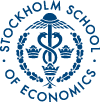No 2017:2: TEAM INTELLIGENCE: THE FOUNDATIONS OF INTELLIGENT ORGANIZATIONS - A Literature Review
Philip Runsten ()
Additional contact information
Philip Runsten: Dept. of Management and Organization, Postal: Stockholm School of Economics, P.O. Box 6501, SE-113 83 Stockholm, Sweden
Abstract: The underlying change driving an increased use of groups and teams for coordination is the increasing specialization, and the number of experts and specialists needing to come together and coordinate. This, in turn, drives complexity, and the only way for organizations to deal with complexity in the long run is by intelligence, that is intelligent coordination. Essential in this intelligent coordination of organizations will be the group level. Teams or micro-systems is the operational unit in which the organization’s need of coordination becomes dependent of the intelligence, behavior, emotional and social skills of individuals. These factors create a variance in collective intelligence. Average collective intelligence at micro-system level is therefore a fairly new way of describing organizational performance. The purpose of this report, which is a literature review, is to give an overview of how collective intelligence at micro-system level has been defined, how it relates to organizational performance, what factors have been identified as causing variance and what types of interventions at team level have been discussed. A total of 92 articles and two dissertations were selected based on a search of EBSCO/Business Source Premier.
Keywords: collective intelligence; Group intelligence; group decision-making; Group problem solving; Group learning; team intelligence; team decision-making; team problem solving; team learning
96 pages, February 23, 2017
Full text files
hastma2017_002.pdfFull text
Questions (including download problems) about the papers in this series should be directed to Helena Lundin ()
Report other problems with accessing this service to Sune Karlsson ().
RePEc:hhb:hastma:2017_002This page generated on 2024-10-23 23:29:06.

